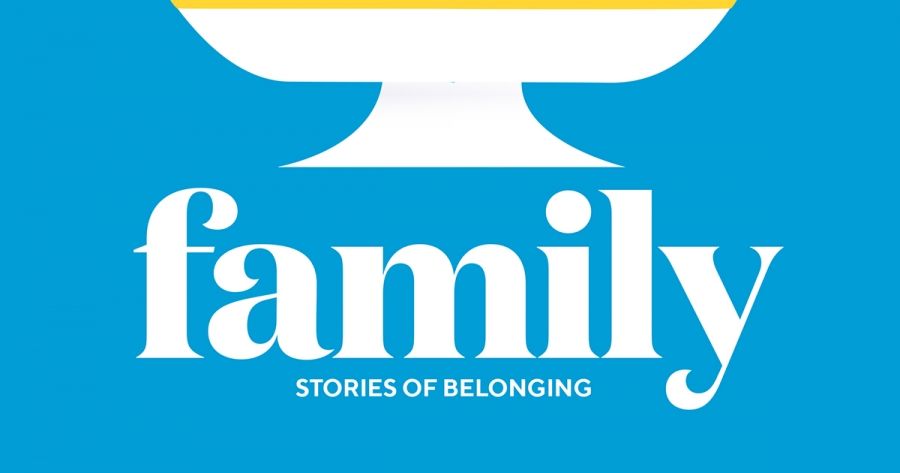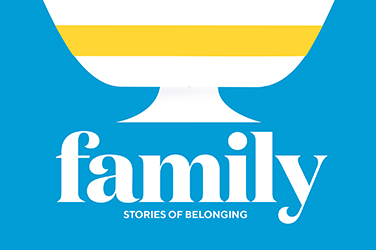
- Free Article: No
- Contents Category: Anthology
- Review Article: Yes
- Article Title: No exit
- Article Subtitle: Nuanced readings of the modern family
- Online Only: No
- Custom Highlight Text:
The nuclear family has a bad literary rap. As we know from fiction and memoir, the traditional two-heterosexual-parents-and-biological-kids model, a structure that provides stability and nourishment for some, can also be a stricture, a disappointment, even a crucible of cruelty. The opening sentence of Anna Karenina notwithstanding, unhappiness is unhappiness; there are common experiences for the survivors of family difficulty, even when specifics differ.
- Featured Image (400px * 250px):

- Alt Tag (Featured Image): Michael Winkler reviews 'Family: Stories of belonging', edited by Alaina Gougoulis and Ian See
- Book 1 Title: Family
- Book 1 Subtitle: Stories of belonging
- Book 1 Biblio: Text Publishing, $34.99 pb, 193 pp
- Book 1 Cover Small (400 x 600):

- Book 1 Cover (800 x 1200):

It is instructive how many of the contributors try to define what a family is. R.D. Laing wrote, ‘We speak of families as though we all know what families are.’ The term is deceptively slippery. Leah Jing McIntosh suggests ‘enduring reciprocity’ and ‘generosity as an ethic, but also as praxis’. She draws on Lauren Berlant and Cornel West, overlaying the concepts of family and community: ‘At its worst, the notion of community is weaponised, or emptied of meaning. At its best, community is a kind of home, a generosity and goodwill, a deep and loving care. Community can be one person, it can be many.’
The most startling definition of family is provided by Oliver Reeson, who characterises it here as ‘not a group of people at all but an environment, a collection of phenomena, that wakes you up, that breathes air into all the hidden parts of yourself so that when they wake up, after a long dormant period, they scream, as though they are hungry’. Oliver Twist simply suggests that to belong is to be understood.
Shannon Burns extends the idea of family to the animal realm, observing that pet relationships involve ‘sharing and displaying strong emotion – misery and joy, fear and excitement – with someone you can trust, a form of emotional connection that does not require explicit communication, alongside a willingness to be dependable and dependant’.
Powerful pieces by Daniel James (Yorta Yorta) and Daniel Browning (Bundjalung and Kullilli) liberate the idea of family from the constrictions of the non-Indigenous temporal frame. James experiences family on Country amongst redgums, ‘akin to sitting alone in the largest of cemeteries, except this place has no gravestones – only memories, imagination and connection’. Browning starts his piece with similar thoughts: ‘If family is actually a series of interlacing bonds, everlasting and fixed, nurtured over time and deepened by a shared history, then we might extend such relationships to the non-human or the more-than-human – to animals, to rivers, to outcrops or headlands, to littoral rainforests.’
However, Browning has also sought connection with non-Aboriginal relatives, with indifferent results and a devastating conclusion: ‘I realised that “family” has certain limits, and that blood alone – in the absence of bonds nurtured over time by a shared sense of the world – is simply not enough. But am I making concessions, simply echoing a way of being and relationality that is alien, to save myself from the embarrassment of being unloved?’ This, in turn, is echoed in a daringly structured essay by J.P. Pomare that considers his Māori identity: ‘But you’re also a descendant of a missionary apologist, you ever tell people about him? Nah, I bet you don’t.’
Social scientists Michael Bittman and Jocelyn Pixley argued that there is a ‘double life’ of the family, and that what people in families do runs parallel to their beliefs about what families are and how they should function. Where needs are not met within the immediate family, these roles can be outsourced to maintain our sense of what should be. The book contains tributes to grandmothers, teachers, neighbours, housemates, and non-biological sisters. Alice Pung acknowledges a man who has been present at many of her pivotal life experiences, a registrar recording the most significant events in the life of her (biological) family. Amy Remeikis writes of finding friends who reflexively understand the fractured relationship she has with her mother. ‘They see the Sisyphean boulder you push and, for those moments, take part of its weight. And you, in turn, take what you can of theirs … We hold each other.’
One of the finest contributions is by Andy Jackson, who starts with his early misapprehension of ‘nuclear family’: ‘I associated it with the era of nuclear weapons, as if that archetypal family was built as a kind of pre-emptive bomb shelter, stocked with canned food batteries, and uncomfortable silences.’ He widens his scope to reflect on experiences within a church community, before finding family among people with Marfan Syndrome and other disabilities, suggesting ‘perhaps it has something to do with intimate, involuntary belonging. A warm room with no exit. Family lets me know who I am, shapes who I am. It nourishes, wounds and educates me.’


Comments powered by CComment